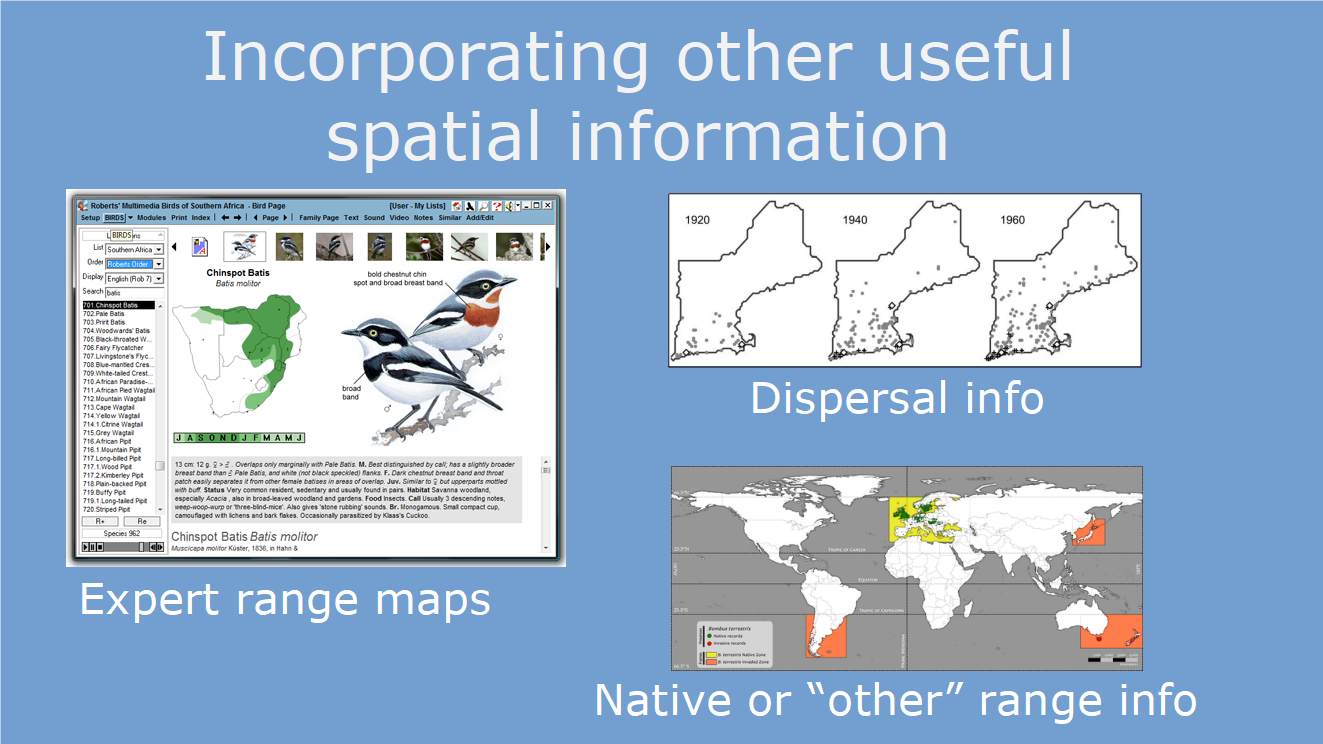For many species the only available distribution data are presence-only occurrences from ad hoc collections such as herbarium or museum specimens.
These data often have major sampling biases (e.g. oversampling near urban areas and roads), which makes it difficult to produce reliable species distribution models.
In this SEEC Stats Toolbox seminar, Vernon talks about a method that helps to address this major flaw of most species species distribution models. He shows how one can integrate other spatial information, such as expert range maps, sampling bias estimation and native range distributions to improve predictions of species distributions.

Here you can download the presentation.
For example code, please see the following papers and associated scripts:
https://github.com/cmerow/Merow_et_al_2016_GEB_Minxent_Examples
